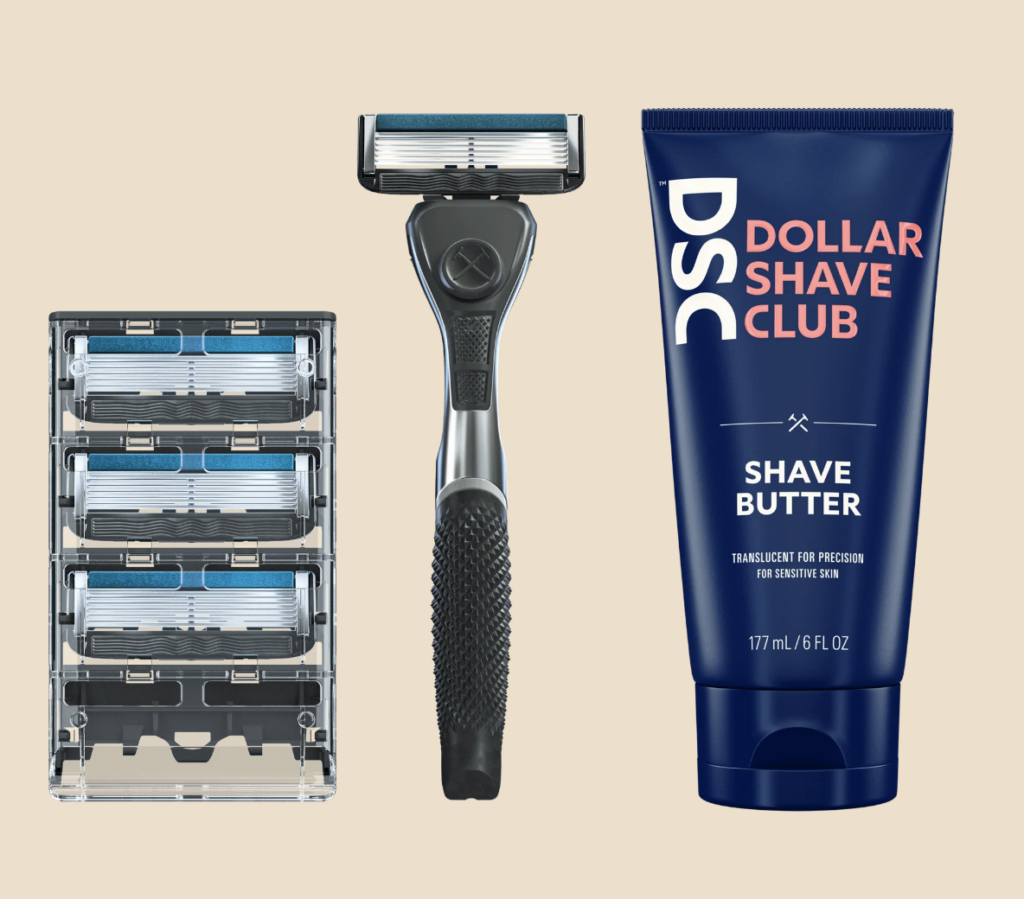The e-commerce landscape continuously evolves, prompting businesses to adopt new strategies for staying competitive and retaining customers. One such tactic that has gained significant traction in recent years in the direct-to-consumer ecommerce realm is the subscription model.
So let’s talk about the various types of ecommerce subscription models, discuss their pros and cons, and provide some specific examples from various industries.
Are you launching or adding a subscription model to your business, check out this free launch guide.
Outline:
• Advantages: Convenience, Cost Savings, Automation
• Disadvantages: Limited Selection, Possible Quality Issues
Bargain/Access Subscription Model
• Advantages: Discounted Prices, Exclusive Content
• Disadvantages: Limited Availability, Lack of Variety
Premium Member Subscription Model
• Advantages: Personalization Options, Additional Features
• Disadvantages: Higher Cost, Not Always Relevant Content
Curation/Surprise Subscription Model
• Advantages: Unique Surprises Every Month, Maximum Surprise Factor
• Disadvantages: Uncertainty Regarding Contents, Possible Duplication of Items
Subscription Box Business Model
• Advantages: Targeted Variety and Selection of Products Based on Consumer Preferences
• Disadvantages: Potential Unsatisfied Customers Due to Poor Matching
Popular examples of subscription-based ecommerce businesses
- Meal kit delivery services (e.g., Blue Apron, HelloFresh)
- Clothing and accessories (e.g., Stitch Fix, Rent the Runway)
- Beauty and personal care (e.g., Dollar Shave Club, Birchbox)
Now, without further ado, let’s dive into it:
Subscribe and Save Model: Keeping Essentials Stocked
The subscribe and save business model focuses on supplying customers with essential, consumable items that require periodic replacement. This model is particularly well-suited for products like toiletries, household supplies, pet food, or even CBD.
Advantages to the Customer: Streamlined Shopping, Cost Savings, Automated Deliveries
- Streamlined Shopping: With a replenishment subscription, customers can avoid the hassle of remembering to purchase essential items or making frequent trips to the store.
- Cost Savings: Customers often receive discounted prices for committing or subscribing to regular purchases, leading to long-term savings.
- Automated Deliveries: The entire process is automated, ensuring that customers receive their products in a timely manner without any effort on their part.
It’s important to note that all of these advantages are adding value to the customer. They are either simplifying the life of the customer or saving the customer money. Many brands capitalize on those things as the offer or value proposition, think Billie’s razors or Thrive Market.
Disadvantages: Limited Product Range, Potential Quality Concerns
- Limited Product Range: Customers may have access to a smaller selection of items compared to traditional retail shopping, which could be a drawback for those who value variety. It doesn’t stop with traditional retail, however, Amazon has changed the game when it comes to having variety and shopping online.
- Potential Quality Concerns: There may be worries about product quality, especially if customers are unable to inspect the items before purchasing them. This is where social proof can go a long way in getting a customer to take the leap and try your product.
Example: Dollar Shave Club provides a replenishment subscription service for razors and grooming products, ensuring that customers always have fresh supplies at their disposal.

Bargain/Access Subscription Model: Exclusive Deals and Content
The bargain/access subscription model offers customers access to exclusive deals, discounts, or content in exchange for a monthly or annual fee. This model is prevalent among online retailers, streaming services, subscription ecommerce, and digital publications.
Advantages to the Customer: Lower Prices, Exclusive Offerings
- Lower Prices: Subscribers can take advantage of lower prices on products and services compared to non-subscribers. An example of this would be Cinemark Movie Club. You pay a monthly fee, and in return, you get a movie ticket every month as well as 20% off concessions.
- Exclusive Offerings: Access to unique content, offers, or experiences that are not available to non-subscribers provides additional value, think Amazon Prime Day.
Disadvantages: Limited Availability, Restricted Variety
- Limited Availability: This is a double-edged sword. Limited availability can help create excitement and FOMO, but can lead to disappointment for customers who miss out.
- Restricted Variety: The range of products, services, or content available through this kind of subscription might be limited, which could be a drawback for those seeking more options.
Example: Amazon Prime grants members access to exclusive deals, free shipping, and streaming content for an annual fee. Notice how Amazon Prime emphasizes a free trial for new members, but also the benefits of being a member like free delivery, popular movies and shows, etc.
Premium Member Subscription Model: Enhanced Features and Personalization
The premium member subscription model offers customers who are already subscribed or who are already members a more premium level of access as an upgrade to their existing subscription. These premium subscribers or members gain additional features, personalization options, or improved services in exchange for a monthly or annual fee. This model is popular among software providers, online courses, and professional networking platforms.
This model is similar to the bargain/access model but different in the aspect of the model is not offering products for a discounted price. The premium member subscription model is not aimed for a cost conscious consumer but rather someone who wants a more personalized experience.
Advantages to the Customer: Customizable Experience, Exclusive Features
- Customizable Experience: Customers can tailor their experience according to their preferences, making the service more valuable and enjoyable.
- Exclusive Features: Subscribers gain access to exclusive features or resources unavailable to non-subscribers. In other words, exclusive features give blue check mark vibes…
Disadvantages: Increased Cost, Irrelevant Content
- Increased Cost: The premium subscription often comes at a higher price compared to basic or free alternatives, which may deter some potential customers.
- Irrelevant Content: Some premium features or content may not be relevant or useful for all subscribers, diminishing the overall value of the subscription. You know what they say, you can’t make everyone happy.
Example: LinkedIn Premium allows members to access additional features like InMail, advanced search filters, and premium insights about job opportunities. Notice how LinkedIn Premium offers a free trial to help diffuse the cost as a barrier for entry.

Curation/Surprise Subscription Model: Unboxing Excitement
The curation/surprise subscription model delivers customers a handpicked selection of products, often centered around a specific theme, each month. This ecommerce subscription model is all about the experience and is ideal for those who enjoy discovering new products or experiences. This subscription model is commonly found in industries like beauty, fashion, and food.
Advantages to the Customer: Monthly Discoveries, Heightened Surprise Factor
- Monthly Discoveries: Customers receive an assortment of new and exciting products each month, keeping the experience fresh and enjoyable.
- Heightened Surprise Factor: Surprise adds excitement and anticipation to the unboxing experience, creating a sense of anticipation and delight for subscribers.
Disadvantages: Content Uncertainty, Potential Item Duplication
- Content Uncertainty: Customers may be unsure about the contents of each box, leading to potential disappointment if the items don’t meet their expectations.
- Potential Item Duplication: There’s a chance subscribers may receive duplicate items or products similar to those they already own, which could reduce the perceived value of the subscription.
Example: Birchbox is a subscription offering a popular beauty subscription box that delivers a curated selection of beauty and skincare products to customers each month. Birchbox really hones in one what makes them stand out: the ability for customers to customize their monthly box with the products they want.

Subscription Box Business Model: Tailored Selections for Unique Tastes
The subscription box business model combines elements of curation and personalization, providing customers with a tailored selection of products based on their preferences. This model is also popular in industries like fashion, beauty, and food.
Advantages to the Customer: Customized Variety, Product Discovery
- Customized Variety: Customers receive diverse products specifically chosen to match their interests and preferences, ensuring a more personalized experience. In order to determine the interests and preferences of the customer, oftentimes a brand will use a survey or questionnaire. The surveys and questionnaires benefit the brand by giving them more information on their customers than they otherwise would have.
- Product Discovery: The subscription box offers a convenient way to discover and try new products without committing to full-size purchases, allowing customers to explore new brands and items.
Disadvantages: Potential Dissatisfaction Due to Mismatched Products
- Potential Dissatisfaction: If the selection of products doesn’t align with customer preferences, it may lead to dissatisfaction and increased churn rates.
Example: Stitch Fix is a personalized clothing subscription service that sends customers a curated selection of items based on their style preferences and size. Notice how they have customers take a quiz to get started. This is a great way to understand customer preferences and expectations to make sure you exceed them from the start.

Popular Examples of Subscription-Based Ecommerce Businesses
Having explored the various types of subscription business models, let’s examine some successful examples from different industries. You’ll notice that every successful brand has this same thing in common: they add value to the customer.
Meal Kit Delivery Services (e.g., Blue Apron, HelloFresh)
These services supply customers with pre-portioned ingredients and easy-to-follow recipes, allowing them to cook delicious meals at home without the hassle of shopping and meal planning.
Clothing and Accessories (e.g., Stitch Fix, Rent the Runway)
Subscription services in this category provide customers with a curated selection of clothing and accessories based on their style preferences, size, and lifestyle. This subscription ecommerce service allows subscribers to refresh their wardrobe without spending hours shopping.
Beauty and Personal Care (e.g., Dollar Shave Club, Birchbox)
These subscription services deliver a range of beauty and grooming products to customers, allowing them to discover and try new items regularly.
Conclusion
E-commerce subscription models give businesses a unique opportunity to build long-term relationships with their customers while providing convenience, personalization, and delightful experiences. By understanding the advantages and disadvantages of each ecommerce subscription platform model, businesses can choose the best approach for their target audience and product offerings.
Are you considering launching a subscription product or service? Check out this free launch guide.



